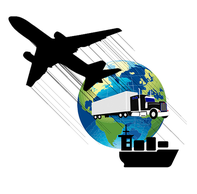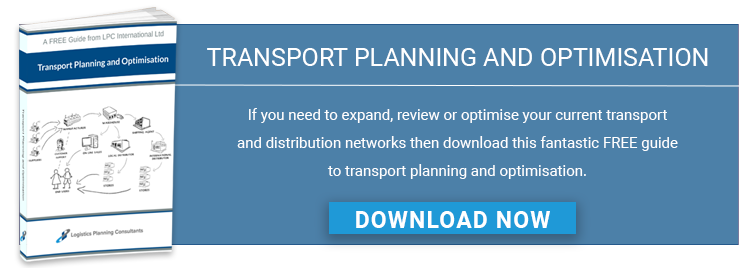
To improve your transport planning strategy and supply chain management, you first need to know what you want to achieve from your supply chain, before making and changes or committing any investment for most businesses there are two overarching goals behind transport planning:
- To move goods from the manufacturing or stockholding point customer locations in the fastest and most cost-effective way possible.
- To future proof your business by preparing for growth, managing change and exploiting new opportunities.
With these strategic goals in mind, transportation planning involves four main objectives, which we will explore in this article:
1) Business Goals
The purpose of transport planning is to support your business goals. This is the litmus test for any change you make. Considerations such as productivity and cost savings are secondary to knowing that your transport strategy helps you achieve the year-on-year growth, service targets and turnover you set for your business. Establish a forward looking transport strategy for the next 5 to 10 years, rather than simply to accommodate your current goals.
2) Policies
There are several aspects to a transport planning strategy, of which policies form the blueprint. The others are assets, which include software, logistics vehicles, physical warehouses and other technology, and staff. Policies provide a framework by which people carry out their jobs, use your assets and assess their results. They too, should therefore be oriented towards the future.
How do your transport policies encourage collaboration between different teams in your business? How do they make it easier for you to establish proactive relationships with your suppliers? How do your policies support your long-term goals? Policies are a means to an end, so should have specific outcomes attached. Plan your policies systematically based on the endpoints you want to reach. Don’t let procedures stand unchallenged for their own sake or develop piecemeal.
3) Investment
Transport planning is as much about spending money wisely as it is about saving it. An important objective should be to plan investment in new technologies, procedures and employees over time, so as to retain your competitive edge and increase the returns you get from your supply chain. Current potential areas of investments include automation systems, warehouse management software, route planning systems and eco-friendly vehicles. As new technologies become available, such as improved robotics or intelligent inventory management systems, your investment priorities may change.
4) Design
A transport planning strategy should spell out how you are to make the best use of the assets and infrastructure you already have. A key objective is therefore to design your supply chain so that each structure works well together and on its own. Warehouse layout is an area that many businesses look at when re-examining their transport strategy. Fleet composition is another, including the question of whether to use in-house or third-party vehicles, and route planning strategy is another.
Sustainability & Integration
When mapping out changes involving investment, design, policy or business goals, think about sustainability and integration. Sustainability involves considering the impact of any change on your business over the short, medium and long-term. For instance, what risks or compromises are involved with a new investment or cost savings scheme? What extra considerations does an improvement bring in terms of compliance and administrative responsibility? Some changes come with hidden extra costs and others with surprise benefits, which is why a thorough and ongoing planning process is essential before any changes are made.
Integration is also necessary, closely coordinating the relationship between your own fleet and that of your supply chain partners, bridging the gap between transport planning and environmental awareness, and linking up your warehouse team, management and delivery team into one unified supply chain.
For more information about supply chain and transport planning, please take a look at our free e-book: Transport Planning & Transport Logistics. The free guide covers topics such as warehouse management, 3PL relationships, bid administration and more. Click here to download your copy.
Related Articles

6 Principles Of Transport Planning You Need To Be Aware Of
Transport planning allows you to optimise your delivery routes, take full advantage of the space in your vehicles and gain the most output from each driver-hour. Read more

3 Key Benefits of Transport Planning
The transport element of an end to end supply chain impacts on so many other aspects of the overall operation that it can rightly be classed as a critical function. Read more

The Importance Of Transport Planning
The transport system is the pivotal element in a logistics chain and can consume perhaps one third of the total cost of logistics. The transport system has an overarching impact on the overall performance of production procedures right through from manufacturing to distribution. Read more


